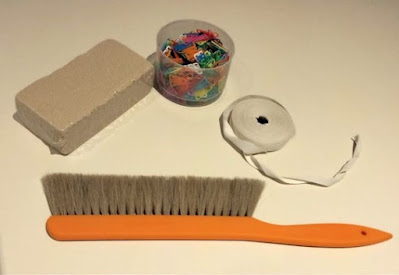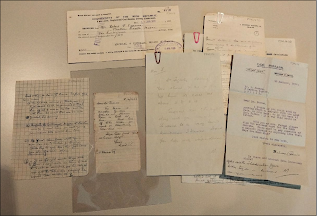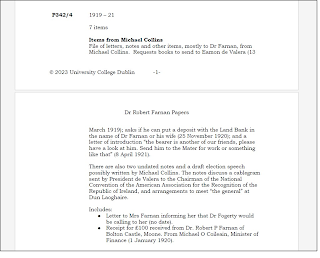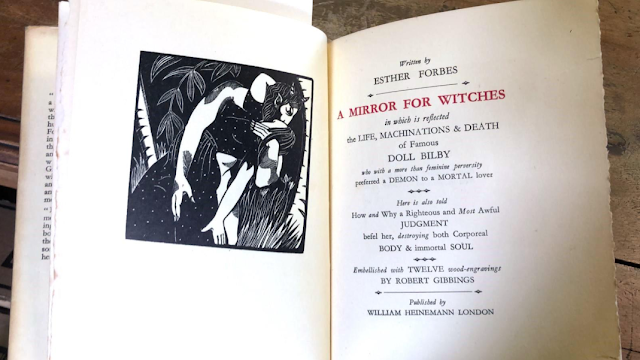Libfocus is delighted to present the second prize post for the CONUL Training and Development Library Assistant Blog Awards 2023. The author is Kathryn Milligan, Library Assistant at University College Dublin (Special Collections).
From time to time, an opportunity comes to delve into a library’s holdings and reconsider how a selection of materials might be gathered and presented to readers and researchers. Recently, I have been looking anew at material related to photography and its history in UCD Special Collections. From the very beginning of this project, it was clear that our holdings included a range of interesting materials, from nineteenth century book, journals, and manuals to large photographic prints. An early stand out item was Sun Pictures of Rocky Mountain Scenery which I later wrote about for the UCD Cultural Heritage Collections blog.
 |
1. Albumen print frontispiece and title page of F. V. Hayden, Sun Pictures of Rocky Mountain Scenery (UCD SC 11.Q.17).
|
Further opportunity to explore these collections came in December 2022 when we welcomed two historians of photography to the reading room. In putting together a display for this, I browsed the shelves to identify further notable items, coming across (for example) the imposing Notes on Irish Architecture, published in 1875, several photographic prints of John Henry Newman, and a photogravure by
Alvin Langdon Coburn.
 |
| 2. Display of photographic prints and photographically illustrated books, UCD Special Collections Reading Room |
These searches suggested the need for a more systematic review to identify photography related holdings within our collections, and a method of making them more findable and accessible to our readers. Building on the knowledge I had gained when writing about Sun Pictures, I decided that identifying and improving the records of photographically illustrated books would be of significant benefit and be of interest to a wide range of disciplines within the university.
 |
3. Albumen print frontispiece and title page of Richard A. Procter, ‘The Moon’ (UCD SC RCSCI 525.3 PRO).
|
Photographically illustrated books contain an actual photographic print, such as an albumen or carbon print. They emerged in the mid-nineteenth century as
photographic processes developed more generally. These were not books that a former owner or collector had personalised through
extra-illustration, but rather fully conceived works that brought together letterpress and photography, with images either tipped in or bound with the text block.
Photographically illustrated books can be found across a range of scholarly and general interest publications, from travel and spectroscopy to biography and medical research. Given the nature of the holdings in UCD Special Collections, which includes books from the libraries of UCD’s antecedent institutions like the Catholic University of Ireland and the Royal College of Science for Ireland, our print collections cover many disciplinary fields.
 |
4. A shelf in UCD Special Collections: are there any photographically illustrated books here?!
|
To assist with identifying these books, I turned to three main resources: Julia van Haaften’s ''Original Sun Pictures': A Checklist from New York Public Library's Holdings of Early Works Illustrated with Photographs, 1844 – 1900’; Helmut Gernsheim’s Incunabula of British Photographic Literature, 1839 – 1875; and the British Library’s online Catalogue of Photographically Illustrated Books. I also consulted more specialised publications on Irish photographic history to identify additional material. As well as basic catalogue searches, I also did systematic shelf searches, replicating van Haaften’s own process in
NYPL.
After consulting the published bibliographies, catalogues, and creating a basic listing of items, I consulted with my Special Collections colleagues to see how this new information could be best captured within our existing catalogue records. We settled on adding relevant MARC fields, capturing information such as the photographer or photographic company’s name, and whether the book appears in van Haaften and Gernsheim. The genre heading ‘Photographically Illustrated Books’ from the LOC’s Thesaurus of Graphical Material was also added to each record.
 |
| 5. Example of an updated catalogue record for a photographically illustrated book
|
To date, I have identified close to thirty photographically illustrated books containing a range of photographic and early photomechanical processes. There are also examples of early colour reproductions and photographic literature. For many of these publications, further research is needed to fully identify the photographic processes employed, as well as details of the photographer or publisher. Our readers can now find these books by searching for ‘photographically illustrated books’ and filtering the search results to ‘Special Collections’ on the UCD Library Catalogue. This basic listing also enables us to easily promote these holdings across the university and seek opportunities to incorporate them into teaching, learning and public engagement programmes, aligning with Pillar 2 of the Library’s Strategic Plan.
I hope that research on, and analysis of, these books will continue and that a standardised cataloguing guideline can be used for similar holdings across UCD Library’s Cultural Heritage collections. For now however, we can look to these books to learn about (and enjoy) the story they tell us about the development of photography and the illustrated book.
 |
6. Hand-coloured albumen print frontispiece and title page of Alexander W. M. Clark Kennedy, ‘The Birds of Berkshire and Buckinghamshire’ (UCD SC Store 598.094229 KEN)
|
ReferencesChandler, Edward. Photography in Ireland: The Nineteenth Century (Dublin: Edmund
Burke, 2001).
Gernsheim, Helmut. Incunabula of British Photographic Literature, 1839 – 1875 (London
and Berkeley: Scolar in association with Derbyshire College of Higher Education, 1984).
van Haaften, Julia. ''Original Sun Pictures': A Checklist from New York Public Library's
Holdings of Early Works Illustrated with Photographs, 1844 – 1900’, Bulletin of The New
York Public Library (80:3 Spring 1977).
All photographs are by the author, and show items from UCD Special Collections.



.png)









.png)














